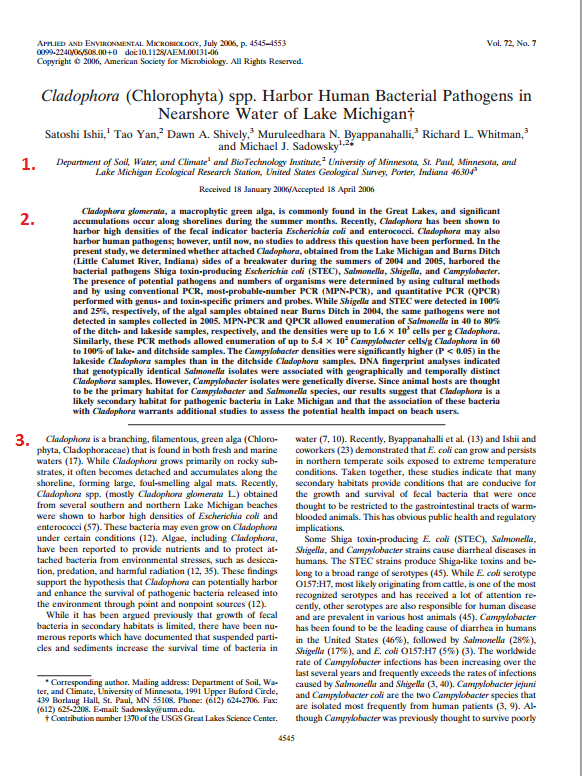Welcome! You'll need a College of DuPage Library card in order to use most of these resources from off campus.
Questions? Feel free to contact me, stop by the Reference Desk, or contact us by email or chat.
Want to know more about the COD library? Check out our orientation video.
Getting Started: Finding Your Topic
Lost about Where to Start?
Some of the following strategies might help you to figure out what products to focus in on:
- An all-purpose Google News or Google Patent search can give you a place to start when looking for your Biotechnology Product. Try, for example, a search of biotechnology and food.
- Look through your textbook for examples that you might want to follow up on. We have a copy in the reserves collection if you didn't bring it.
- This list, the Top 6 Everyday Products Using Biotechnology was published in 2017, and gives you some general fields and names to follow, as does this list from 2012 published by the biotechnology trade association
- Check out Fierce Biotech, an online trade publication.
- Your textbook suggests Genentech's product development page.
Getting Background Research
Now that you've picked something out, you'll want to work to find background that will help you to interpret the scholarly articles that you'll find later. Start by searching any of the databases below for your product, but be prepared to broaden out if you don't find anything. For example, after trying golden rice, try genetically modified food.
- Gale Virtual Reference Library has got great entries on many of your topics.
- Visit CQ Researcher, a library database that summarizes current events into massive PDFs.
- Credo Reference has the full-text of hundreds of dictionaries and encyclopedias.
- While you would never cite Wikipedia, you can use the references at the bottom of the entry to start your search.
Finding Articles in Databases
Scientific Articles
Scientific research can be best found in academic databases. Here are the top two databases to look for information.
Academic Search Complete has a mixture of popular and scholarly articles on a variety of subjects. You'll want to be sure that you're using a source appropriate for class when searching.
Science Direct contains only scientific full text articles. Be sure to select "subscribed journals" when searching.
See the full list of biology databases.
You can also look at National Newspapers Core and Newspaper Source to see if there are any news articles that discuss the marketing of your product.
Trying to find out if we have an article in full-text? Check the Journal Locator to see what we might have in print or online. You can also InterLibrary Loan. Questions? Contact me.
Distinguishing a Research Article From a Popular Article
Worried that you might be reading a trade article from a scholarly article, or a review article from a scientific research article?
Start by looking for the distinctive markers of a scholarly article: are the authors' degrees or university affiliations listed? Do you see an abstract? How about charts, tables, graphs?
Once you are certain that you are looking at a scholarly article, make certain that your article is a scientific research article, by looking for the following distinctive sections:
- Abstract
- Introduction
- Method
- Results
- Discussion
- Conclusion
- References or Works Cited
Some of these sections may be merged with other sections, have slightly different names, or may not be labeled, but all should be present in one way or another.
Confused? Take a look at page one of a scholarly article below:

Notice the following:
- The authors list a university affiliation
- The abstract is right in the center of the page
- The (unmarked) introduction
Want to take a closer look? Cladophora (Chlorophyta) spp. Harbor Human Bacterial Pathogens in Nearshore Water of Lake Michigan is a research article found on PubMedCentral, the government-sponsored free article database. You can use this as a model scholarly research article.
- Check out this website about reading scholarly articles.
- We also have a book on reserve that will help you to learn more about reading scholarly articles
- Remember that you can use reference databases to explain words or concepts that you're unfamiliar with. Try searching Credo or Gale to start.
Using APA Style
Find directions about how to cite your sources on the library citation guide.
Most databases will have a Cite link that you can also click to get article citations.
Finally, you are welcome to use NoodleBib if you'd like to use a program to create and organize your citations. You must "Create a New Folder" when you use NoodleBIB for the first time. Click on "I am citing a(n):," choose the type of item you are citing, and then fill in the online form. Your bibliography will be formatted for you.
Further questions about APA style? Check out the APA Sample Paper from Purdue OWL, which includes sample papers.
